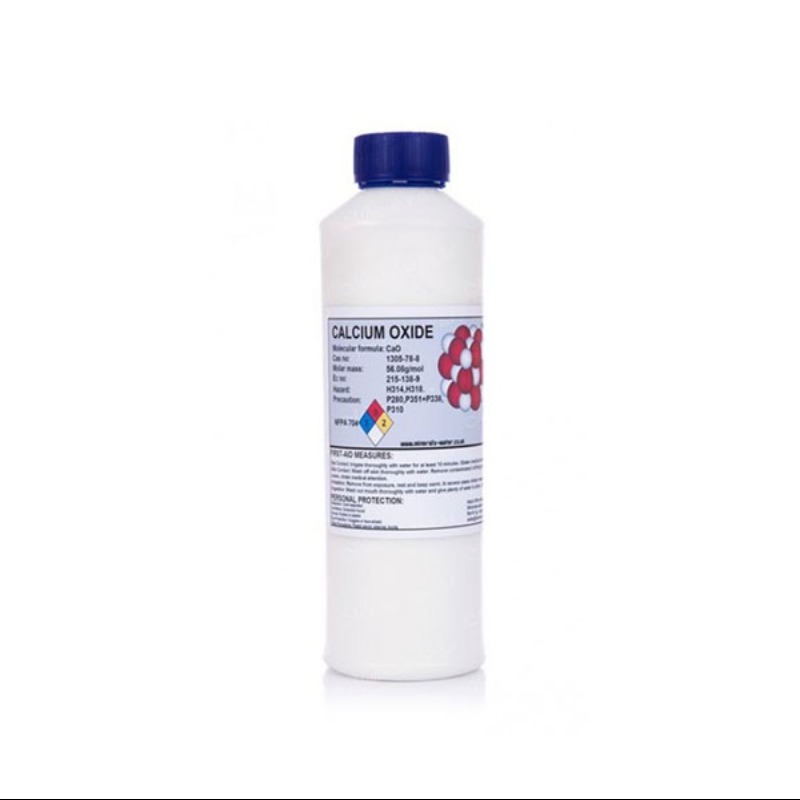
Calcium oxide for lab grade
CaO+H2SO4 → CaSO4+H2O
| CaO | Calcium Oxide |
| Density | 3.34 g/cm³ |
| Molar Mass | 56.0774 g/mol |
| Solubility | Soluble in water & glycerol |
| Boiling Point | 2,850 °C |
| Melting Point | 2,572 °C |
1. Who Discovered Calcium oxide?
Ans: It was first discovered in England in 1808 when a combination of lime and mercuric oxide was electrolyzed by Sir Humphry Davy.
2. Can you drink Limewater?
Ans: Lime water mimics hydrochloric acid which is found in the stomach and, therefore, helps prevent constipation and conditions such as diarrhoea.
3. Why is calcium important for bones?
Ans: Calcium makes bones more brittle. Getting enough calcium in your diet not only maintains healthy bones but also may help prevent hypertension.
4. What are the two uses of quicklime?
Ans: It is used as a basic flux. It is used in the refining of sugar and as a disinfectant and germicide.
5. Does calcium oxide dissolve in water?
Ans: Calcium oxide dissolves in water and glycerol
. If you'd like to know more about this chemical or need any analysis
report regarding this chemical then contact us support@echem.com.bd.High Reactivity: Calcium oxide (CaO), also known as quicklime, reacts vigorously with water, releasing heat and forming calcium hydroxide (slaked lime).
Purity: Lab-grade calcium oxide is highly pure, ensuring accurate results in chemical reactions and analysis.
Versatility: It is used in various applications, including pH regulation, flue gas desulfurization, and as a reagent in organic synthesis.
Desiccant Properties: CaO effectively absorbs moisture, making it valuable as a drying agent in laboratory settings.
Thermal Stability: With a high melting point (2572°C), calcium oxide remains stable at high temperatures, useful in thermal processes.
Neutralizing Agent: It is commonly used to neutralize acidic environments in both lab and industrial processes.
Chemical Production: CaO is essential in producing calcium carbide, calcium hypochlorite, and other important chemical compounds.
Cost-Effective: Calcium oxide is relatively inexpensive and readily available, making it an economical choice for various laboratory applications.
No Review Found.
echem
483
Total Item
Login To Comment